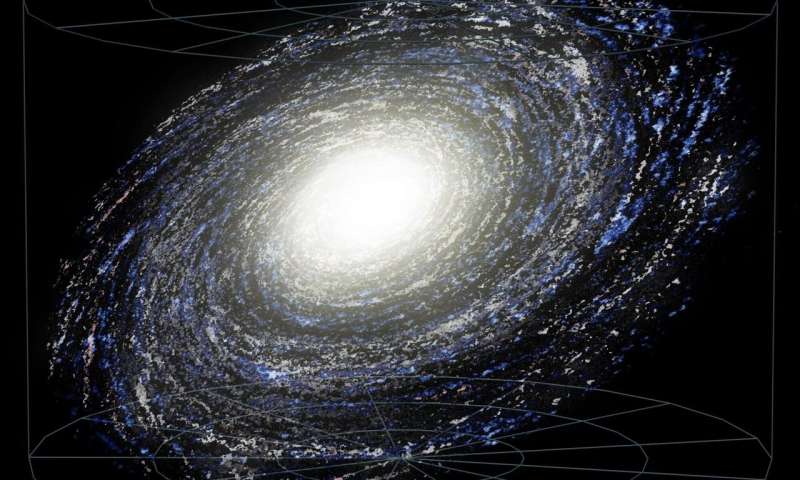This article has been reviewed according to Science X's editorial process and policies. Editors have highlighted the following attributes while ensuring the content's credibility:
fact-checked
trusted source
proofread
Exploring the galactic habitable zone

Our planet sits in the habitable zone of our sun, the special place where water can be liquid on the surface of a world. But that's not the only thing special about us: we also sit in the galactic habitable zone, the region within the Milky Way where the rate of star formation is just right.
The Earth was born with all the ingredients necessary for life—something that most other planets lack. Water as a solvent. Carbon, with its ability to form long chains and bind to many other atoms, a scaffold. Oxygen, easily radicalized and transformable from element to element, to provide the chain reactions necessary to store and harvest energy. And more: hydrogen, phosphorous, nitrogen. Some elements fused in the hearts of stars, other only created in more violent processes like the deaths of the most massive stars or the collisions of exotic white dwarfs.
And with that, a steady, long-lived sun, free of the overwhelming solar flares that could drown the system in deadly radiation, providing more than 10 billion years of life-giving warmth. Larger stars burn too bright and too fast, their enormous gravitational weight accelerating the fusion reactions in their cores to a frenetic pace, forcing the stars to burn themselves out in only a few million years.
And on the other end of the spectrum sit the smaller red dwarf stars, some capable of living for 10 trillion years or more. But that longevity does not come without a cost. With their smaller sizes, their fusion cores are not very far from their surfaces, and any changes or fluctuations in energy result in massive flares that consume half their faces—and irradiate their systems.
And on top of it all, our neighborhood in the galaxy, on a small branch of a great spiral arm situated about 25,000 light-years from the center, seems tuned for life: a galactic habitable zone.
Too close to the center and any emerging life must contend with an onslaught of deadly radiation from countless stellar deaths and explosions, a byproduct of the cramped conditions of the core. Yes, stars come and go, quickly building up a lot of the heavy elements needed for life, but stars can be hundreds of times closer together in the core. The Earth has already suffered some extinction events likely triggered by nearby supernovae, and in that environment we simply wouldn't stand a chance. Explosions would rip away our protective ozone layer, exposing surface life to deadly solar UV radiation, or just rip away our atmosphere altogether.
And beyond our position, at greater galactic radii, we find a deserted wasteland. Yes, stars appear and live their lives in those outskirts, but they are too far and too lonely to effectively spread their elemental ash to create a life-supporting mixture. There simply isn't enough density of stars to support sufficient levels of mixing and recycling of elements, meaning that it's difficult to even build a planet out there in the first place.
And so it seems that life would almost inevitably arise here, on this world, around this sun, in this region of the Milky Way galaxy. There's little else that we could conceivably call home.
Provided by Universe Today





















